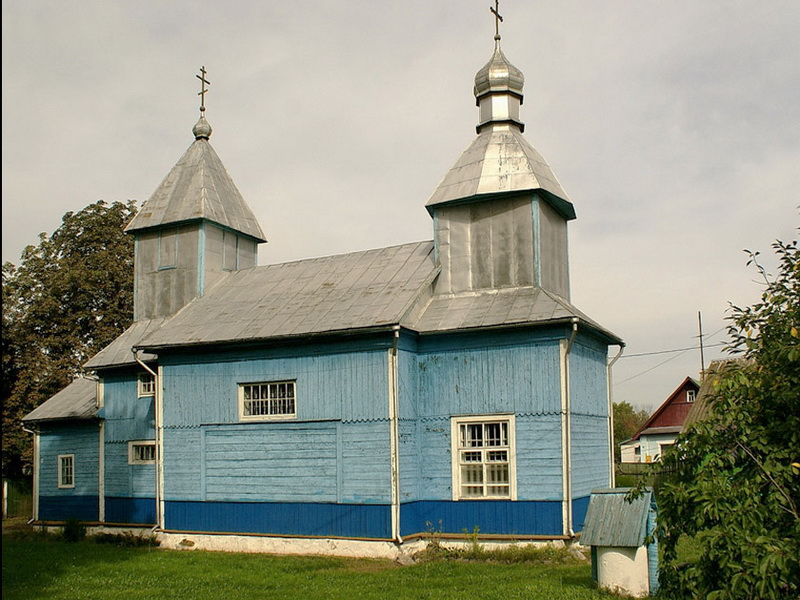History
Originally, a Uniate church stood on this site, which was converted to Orthodox in 1808. However, the current building was constructed later — in 1868. A local Lepel legend is associated with its foundation. During a terrible plague, a local man had a prophetic dream: to end the suffering, a church must be built in honor of Saint Paraskeva Pyatnitsa. So it happened — once the church was completed, the disease ceased. During the war years, the church reopened its doors to the faithful, and despite losing its sacred status in the postwar era, it survived and was eventually revived.
Architecture
The church is made of wood, giving it a warm and cozy feel. Its architecture is notable for its horizontal window arrangement — a rare feature in Belarusian church design. The interior is modest yet spiritually rich, featuring icons of the “Smolensk Mother of God,” the Apostles Peter and Paul, and the central icon of Saint Paraskeva Pyatnitsa, protector of women, agriculture, and health.
Excursions
Today, the church is open for visitors as part of cultural and religious routes. One of the most popular options is the excursion from Minsk to the Church of Saint Paraskeva Pyatnitsa in Lepel, where you can not only learn the legend behind its creation but also admire a rare example of wooden ecclesiastical architecture. We offer individual tours that allow you to experience the peaceful and sacred atmosphere, listen to engaging stories from our guides, and connect with the spiritual heritage of Belarus.
